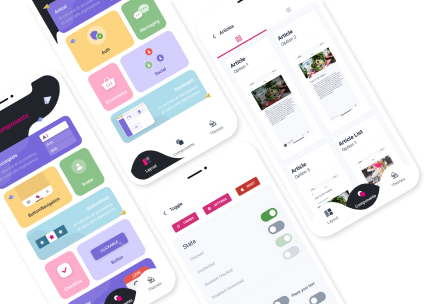In-Depth Guide to Understanding the .NET Runtime
If you are a software developer working with .NET framework, you might have heard about the .NET runtime. It is an essential component of the .NET platform that enables the execution of code written in various programming languages like C#, F#, and Visual Basic. In this article, we will explore the .NET runtime in-depth and discuss its various features, components, and benefits.
What is .NET Runtime?
The .NET runtime is a virtual machine that provides a runtime environment for executing .NET applications. It includes various services like memory management, security, exception handling, and garbage collection, which are essential for developing robust and reliable applications. The .NET runtime consists of two main components – the Common Language Runtime (CLR) and the .NET Framework Class Library (FCL).
Common Language Runtime (CLR)
The CLR is the foundation of the .NET runtime and provides several services like memory management, type safety, code access security, and exception handling. It is responsible for compiling the intermediate language (IL) code into native code during runtime and executing it on the target system.
.NET Framework Class Library (FCL)
The FCL is a vast collection of pre-built classes and functions that developers can use to create .NET applications quickly. It includes various namespaces like System.IO, System.Data, and System.Security, which provide functionality related to file operations, data access, and security, respectively. The FCL also includes support for XML, networking, and serialization, among other things.
How Does the .NET Runtime Work?
When a .NET application starts, the CLR loads the required assemblies into memory and verifies their digital signatures to ensure they are from a trusted source. It then compiles the IL code into native code using Just-In-Time (JIT) compilation and executes it on the target system.
During runtime, the CLR manages memory allocation and deallocation using a technique called garbage collection. It tracks the usage of objects in memory and frees up the memory when it is no longer needed. The CLR also provides support for exception handling, which allows developers to write robust applications that can handle unexpected errors and exceptions.
Benefits of Using .NET Runtime
There are several benefits of using the .NET runtime for developing applications:
- Cross-platform Compatibility: .NET applications can run on various platforms like Windows, Linux, and macOS, making them highly portable and versatile.
- Wide Language Support: .NET supports various programming languages like C#, F#, Visual Basic, and more, allowing developers to choose the language that suits their needs and preferences.
- Security: The .NET runtime provides robust security features like code access security and role-based security, which help prevent unauthorized access to sensitive data.
- Performance: The JIT compilation and garbage collection techniques used by the CLR provide excellent performance and memory management, resulting in faster and more efficient applications.
Frequently Asked Questions (FAQs)
Q1. What is the difference between .NET Framework and .NET Core?
A1. The .NET Framework is a Windows-only platform that includes the CLR and FCL components, among others. On the other hand, .NET Core is a cross-platform framework that includes a subset of the .NET Framework components and is designed for building lightweight and modular applications.
Q2. What is Just-In-Time (JIT) Compilation?
A2. JIT compilation is a technique used by the CLR to compile the intermediate language (IL) code into native code during runtime. This allows the code to run faster and more efficiently since it can take advantage of the target system's hardware and resources.
Q3. What is Garbage Collection?
A3. Garbage collection is a technique used by the CLR to manage memory allocation and deallocation dynamically. It automatically tracks the usage of objects in memory and frees up the memory when it is no longer needed, resulting in more efficient memory management.
Q4. What is Code Access Security?
A4. Code access security is a feature provided by the .NET runtime that restricts the execution of untrusted code by enforcing security policies and permissions. It helps prevent unauthorized access to sensitive data and resources, making applications more secure and reliable.
Q5. Can I use .NET Runtime for developing web applications?
A5. Yes, you can use .NET Runtime for developing web applications using various frameworks like ASP.NET and ASP.NET Core. These frameworks provide extensive support for building web applications with features like routing, middleware, and authentication.
Conclusion
In conclusion, the .NET runtime is an essential component of the .NET platform that provides a robust and reliable runtime environment for executing .NET applications. It includes various services like memory management, security, exception handling, and garbage collection, which are crucial for developing high-performance and efficient applications. By understanding the .NET runtime's features and benefits, developers can build better applications that are more secure, reliable, and portableacross multiple platforms. With its support for multiple programming languages, cross-platform compatibility, and robust security features, the .NET runtime is an excellent choice for developing a wide range of applications.
In summary, the .NET runtime is an essential component of the .NET framework that provides a runtime environment for executing .NET applications. It includes various services like memory management, garbage collection, exception handling, and security, which are crucial for developing robust and reliable applications. By leveraging the benefits of the .NET runtime, developers can build high-performance and efficient applications that run seamlessly across multiple platforms.If you're new to .NET development, you may have some questions about the .NET runtime and how it works. In this article, we'll answer some of the most frequently asked questions about the .NET runtime and provide an in-depth understanding of its features and capabilities.











